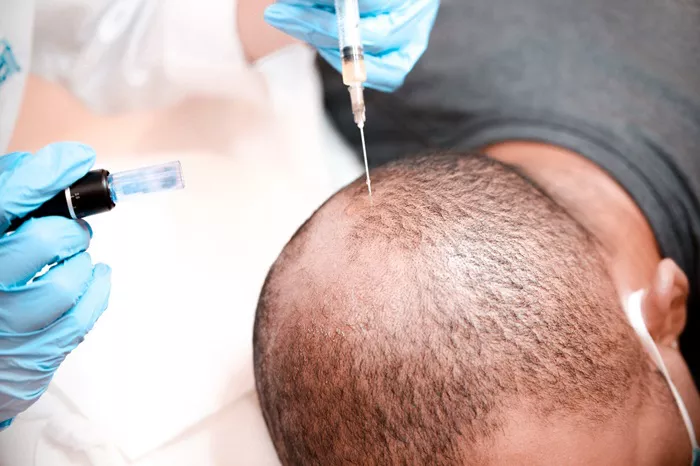Hair transplants have become a popular solution for hair loss. Many people seek this procedure to restore their hairline. However, one common concern is the likelihood of failure. Understanding the factors that influence the success or failure of a hair transplant is essential. This article will explore these factors in detail, providing a comprehensive overview.
Factors Influencing Hair Transplant Success
Quality of the Donor Hair
The quality of the donor hair is crucial. Healthy, strong hair from the donor area increases the chances of a successful transplant. If the donor hair is weak or sparse, the results may not be optimal.
Surgeon’s Expertise
The surgeon’s skill and experience play a significant role. An experienced surgeon can ensure proper extraction and implantation. Poor technique can lead to failed transplants or unnatural results.
Patient’s Health and Lifestyle
A patient’s overall health impacts the success of a hair transplant. Conditions like diabetes or immune disorders can affect healing. Lifestyle choices, such as smoking, can also impede recovery and growth.
Common Causes of Hair Transplant Failure
Poor Surgical Technique
Poor surgical technique is a leading cause of failure. This includes improper handling of hair follicles. Damaged follicles may not survive the transplantation process.
Inadequate Post-Operative Care
Following the surgeon’s post-operative care instructions is critical. Neglecting these guidelines can lead to infections or graft failure. Proper care ensures the best environment for hair growth.
Unrealistic Expectations
Patients with unrealistic expectations may feel their transplant has failed. Understanding the limitations and potential results is essential. A good surgeon will provide a realistic outlook.
Signs of a Failing Hair Transplant
Poor Hair Growth
One of the most obvious signs is poor hair growth. If the transplanted hair does not grow as expected, it may indicate a problem. This could be due to poor technique or unhealthy donor hair.
Infection or Scalp Issues
Infections or other scalp issues can signal failure. Redness, swelling, or pain should be addressed immediately. Proper hygiene and care can prevent most of these issues.
Unnatural Appearance
An unnatural appearance is a common sign of failure. This includes unnatural hair direction or density. It can result from improper placement of hair follicles.
SEE ALSO: How Long Till Swelling Goes Down After Hair Transplant?
How to Minimize the Risk of Hair Transplant Failure
Choose a Qualified Surgeon
Selecting a highly qualified and experienced surgeon is paramount. Research their credentials and look for patient reviews. A good surgeon will have a track record of successful procedures.
Follow Post-Operative Instructions
Strictly following post-operative instructions is crucial. This includes medication, avoiding certain activities, and proper scalp care. Adhering to these guidelines supports healing and hair growth.
Maintain a Healthy Lifestyle
Maintaining a healthy lifestyle can enhance the success of your transplant. Eat a balanced diet, exercise regularly, and avoid smoking. Healthy habits promote better healing and growth.
Advanced Techniques to Improve Success Rates
Follicular Unit Extraction (FUE)
FUE is a popular technique that improves success rates. It involves extracting individual follicles, reducing damage. This method can provide more natural results.
Platelet-Rich Plasma (PRP) Therapy
PRP therapy can support hair growth post-transplant. It involves injecting your plasma into the scalp. This promotes healing and stimulates hair follicles.
Robotic Hair Transplantation
Robotic hair transplantation uses advanced technology. It ensures precise extraction and placement of hair follicles. This method reduces human error and improves outcomes.
Understanding the Success Rates
Statistical Success Rates
Success rates vary but are generally high. Studies show success rates between 85-95%. These rates depend on various factors, including technique and surgeon expertise.
Long-Term Success
Long-term success is also promising. Most transplanted hair will continue to grow for years. Regular follow-ups with your surgeon can ensure ongoing success.
Psychological Impact of Hair Transplant Failure
Emotional Distress
Hair transplant failure can cause emotional distress. Patients may feel self-conscious or disappointed. It’s important to address these feelings and seek support if needed.
Impact on Self-Esteem
Failed transplants can affect self-esteem. Patients may feel less confident in their appearance. Consulting a therapist can help manage these emotions.
Alternatives to Hair Transplants
Non-Surgical Treatments
Non-surgical treatments like medications can be effective. Options include minoxidil and finasteride. These treatments can slow hair loss and promote growth.
Hairpieces and Wigs
Hairpieces and wigs offer an immediate solution. They come in various styles and qualities. This option can be a good alternative for those not suitable for surgery.
Conclusion
Hair transplants are generally successful, but failure is possible. Factors like the surgeon’s expertise, patient health, and post-operative care are crucial. By understanding these factors and taking appropriate measures, you can minimize the risk of failure. Always choose a qualified surgeon and follow their advice closely. With the right approach, you can achieve a successful hair transplant and restore your confidence.

